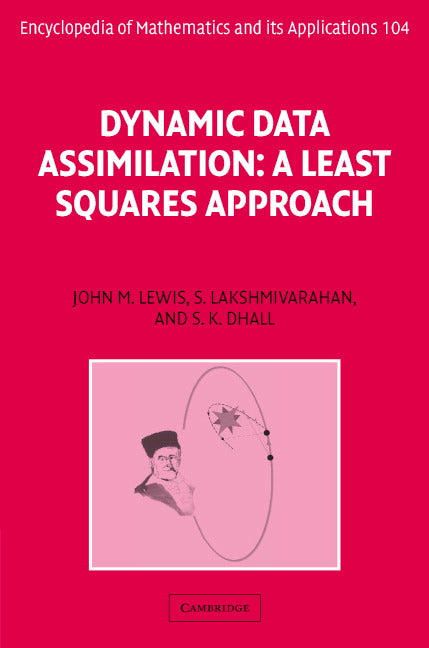Freshly Printed - allow 8 days lead
Couldn't load pickup availability
Dynamic Data Assimilation
A Least Squares Approach
A basic one-stop reference for graduate students and researchers.
John M. Lewis (Author), S. Lakshmivarahan (Author), Sudarshan Dhall (Author)
9780521851558, Cambridge University Press
Hardback, published 3 August 2006
680 pages, 29 tables 208 exercises
24.4 x 16.4 x 3.9 cm, 1.1 kg
"This book provides readers with a good mathematical framework for data assimilation, with all important proofs and deviations. I recommend this book for data assimilation system developers and colleagues who work with data assimilation research and applications." - Ziang-Yu Huang, Bulletin of the American Meteorological Society
Dynamic data assimilation is the assessment, combination and synthesis of observational data, scientific laws and mathematical models to determine the state of a complex physical system, for instance as a preliminary step in making predictions about the system's behaviour. The topic has assumed increasing importance in fields such as numerical weather prediction where conscientious efforts are being made to extend the term of reliable weather forecasts beyond the few days that are presently feasible. This book is designed to be a basic one-stop reference for graduate students and researchers. It is based on graduate courses taught over a decade to mathematicians, scientists, and engineers, and its modular structure accommodates the various audience requirements. Thus Part I is a broad introduction to the history, development and philosophy of data assimilation, illustrated by examples; Part II considers the classical, static approaches, both linear and nonlinear; and Part III describes computational techniques. Parts IV to VII are concerned with how statistical and dynamic ideas can be incorporated into the classical framework. Key themes covered here include estimation theory, stochastic and dynamic models, and sequential filtering. The final part addresses the predictability of dynamical systems. Chapters end with a section that provides pointers to the literature, and a set of exercises with instructive hints.
1. Synopsis
2. Pathways into data assimilation: illustrative examples
3. Applications
4. Brief history of data assimilation
5. Linear least squares estimation: method of normal equations
6. A geometric view: projection and invariance
7. Nonlinear least squares estimation
8. Recursive least squares estimation
9. Matrix methods
10. Optimisation: steepest descent method
11. Conjugate direction/gradient methods
12. Newton and quasi-Newton methods
13. Principles of statistical estimation
14. Statistical least squares estimation
15. Maximum likelihood method
16. Bayesian estimation method
17. From Gauss to Kalman: sequential, linear minimum variance estimation
18. Data assimilation-static models: concepts and formulation
19. Classical algorithms for data assimilation
20. 3DVAR - a Bayesian formulation
21. Spatial digital filters
22. Dynamical data assimilation: the straight line problem
23. First-order adjoint method: linear dynamics
24. First-order adjoint method: nonlinear dynamics
25. Second-order adjoint method
26. The ADVAR problem: a statistical and a recursive view
27. Linear filtering - Part I: Kalman filter
28. Linear filtering-part II
29. Nonlinear filtering
30. Reduced rank filters
31. Predictability: a stochastic view
32. Predictability: a deterministic view
Bibliography
Index.
Subject Areas: Meteorology & climatology [RBP], Mathematical modelling [PBWH], Probability & statistics [PBT]


